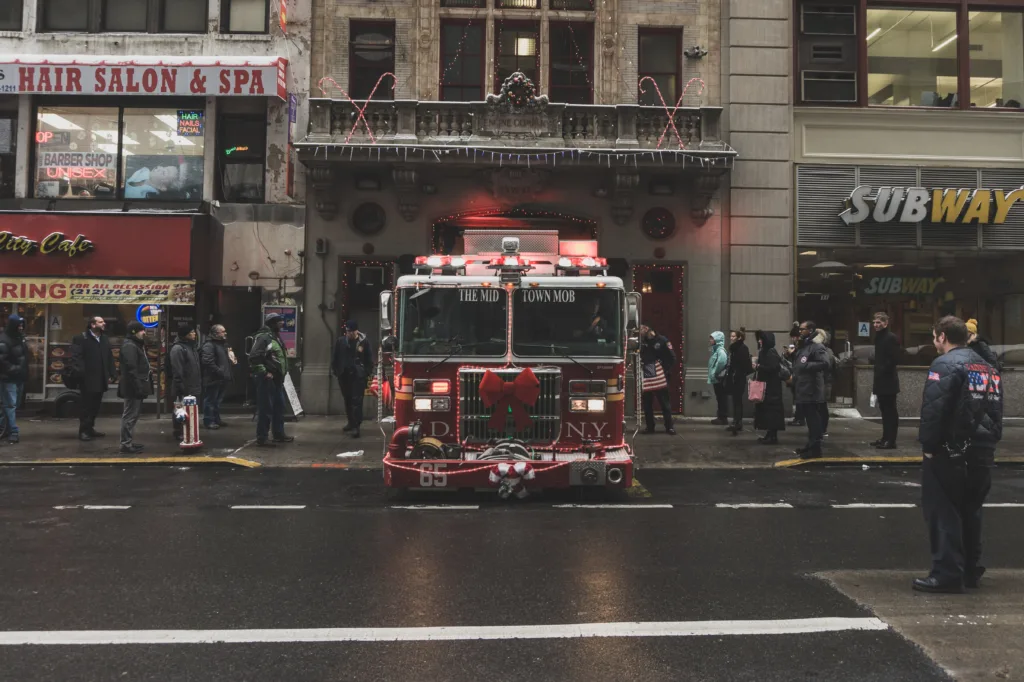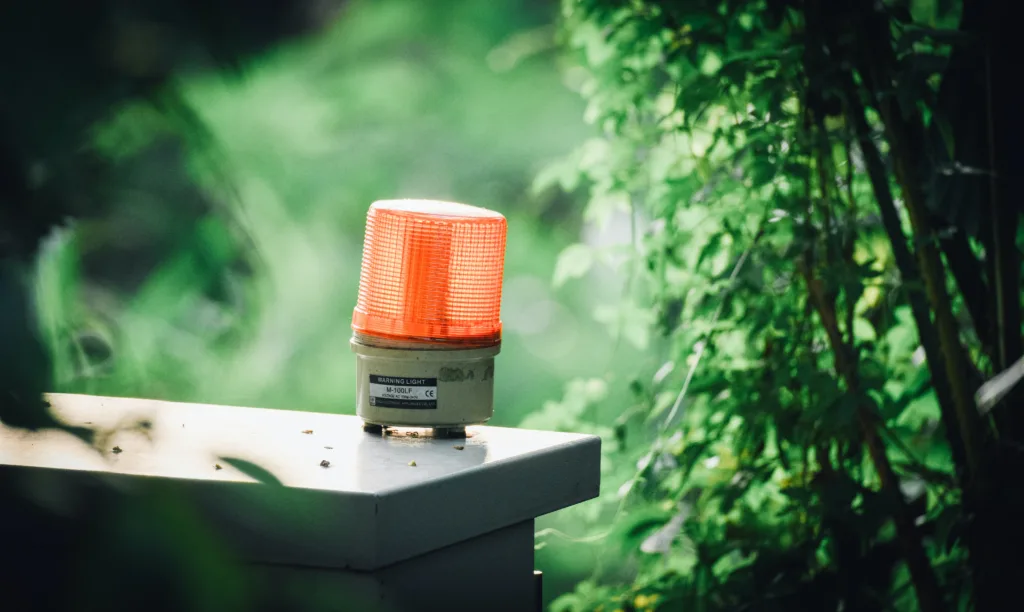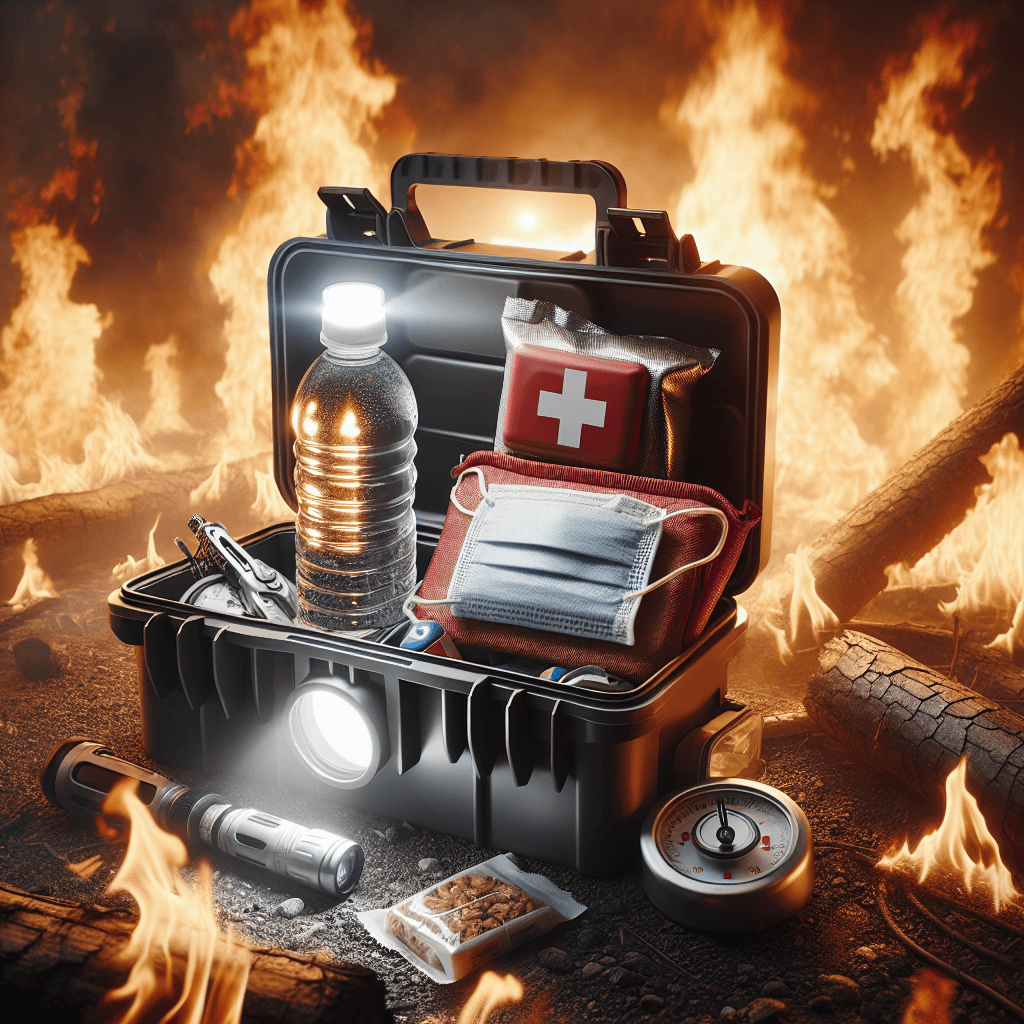In today’s unpredictable world, preparing for emergencies is crucial. This article sheds light on the significance of emergency kits specifically tailored for wildfires. With devastating wildfires becoming more frequent and intense, it is imperative to equip ourselves with the necessary resources and supplies to mitigate the risks. By understanding the key essentials to include in your emergency kit, you can ensure the safety and well-being of yourself and your loved ones during these challenging circumstances.

Table of Contents
Emergency Kits for Wildfires
What are emergency kits?
Emergency kits are pre-assembled sets of supplies and equipment that are designed to help individuals and families during emergency situations, such as wildfires. These kits typically include essential items like food, water, first aid supplies, and personal protective equipment. Having an emergency kit on hand can greatly increase your chances of staying safe and comfortable during a wildfire event.
Why are emergency kits important for wildfires?
Wildfires can spread quickly and can be incredibly destructive, posing a significant threat to both lives and property. During a wildfire, access to basic necessities like food, water, and shelter may be limited. Having an emergency kit prepared ahead of time ensures that you have the essential items you need to survive and stay safe until the wildfire is under control or until help arrives. It is important to be proactive and take responsibility for your own safety during a wildfire by having an emergency kit ready.
Essential Items for Wildfire Emergency Kits
Water and Water Containers
One of the most crucial items to include in your wildfire emergency kit is water. It is recommended to have at least one gallon of water per person per day for drinking and sanitation purposes. Additionally, it is essential to include water containers that are sturdy and can withstand heat and potential exposure to flames. Consider storing both bottled water and water purification tablets or filters in your emergency kit to ensure a sufficient supply of clean drinking water.
Non-Perishable Food
In a wildfire emergency, access to fresh food may be limited for an extended period of time. Therefore, it is important to include non-perishable food items in your emergency kit. Choose items that do not require refrigeration, cooking, or a water source. Some examples of suitable non-perishable food include canned goods, energy bars, dehydrated fruits, and jerky. Remember to check the expiration dates regularly and replace any expired items.
First Aid Supplies
A well-stocked first aid kit is essential in any emergency kit, including those for wildfires. It should include items such as adhesive bandages, sterile gauze, antiseptic wipes, tweezers, scissors, and over-the-counter medications for pain relief and minor ailments. Additionally, consider including any necessary prescription medications and basic medical supplies specific to your family’s needs. Regularly check the expiration dates of medications and replace them as needed.
Personal Protective Equipment
During a wildfire, smoke, ash, and debris can pose serious health risks. It is important to include personal protective equipment (PPE) in your emergency kit to help protect yourself and your family. PPE items to consider include N95 masks, safety goggles, gloves, and sturdy shoes or boots. Make sure the sizes of the PPE items in your kit are appropriate for each family member.
Communication Devices
Communication is crucial during a wildfire emergency. Include battery-powered or hand-cranked radios in your emergency kit to stay informed about evacuation orders, updates from emergency services, and weather conditions. Additionally, having a fully charged cell phone or a portable power bank can ensure that you have means of communication during power outages. It is also a good idea to include a list of emergency contact numbers, including those for family members, friends, and local authorities.
Important Documents and Cash
Gather important documents such as identification cards, birth certificates, insurance policies, and medical records, and include copies of these documents in your emergency kit. Consider storing them in waterproof and fire-resistant bags or containers. It is also recommended to have some cash on hand, as ATMs and credit card machines may not be functioning during a wildfire emergency. Include a small amount of cash in your kit in case you need to purchase any necessary items or services.
Medications and Medical Supplies
If you or any family members have prescription medications, it is vital to include an ample supply in your emergency kit. Be sure to rotate these medications regularly to avoid expiration and replace them as needed. In addition to prescription medications, include basic medical supplies such as adhesive bandages, antiseptic ointments, and fever reducers. If any family members have specific medical conditions, consider packing extra supplies and equipment related to their health needs.
Sanitation and Hygiene Items
During a wildfire emergency, access to running water and proper sanitation facilities may be limited. Include sanitation and hygiene items in your emergency kit to maintain cleanliness and prevent the spread of illness. Some essential items include toilet paper, wet wipes, hand sanitizer, soap, and feminine hygiene products. It is important to pack these items in sealed, waterproof bags to keep them clean and dry.
Emergency Shelter
In the event of an evacuation or if your home becomes unsafe during a wildfire, it is crucial to have emergency shelter options in your kit. Include items such as lightweight, waterproof tents, sleeping bags, blankets, and tarps. These items can provide protection and comfort if you need to stay in temporary shelters or campgrounds. Additionally, consider including items like portable cooking stoves or heaters, as well as fuel, if safe cooking or heating options are necessary.
Tools and Equipment
Including basic tools and equipment in your wildfire emergency kit can be incredibly helpful during an emergency situation. Some essential tools to consider include a multi-purpose knife, a hand-cranked flashlight or lantern, duct tape, a whistle, and a fire extinguisher. These tools can assist with various tasks such as cutting through debris, signaling for help, and providing light in dark or smoke-filled environments. It is important to choose tools that are compact, reliable, and easy to use.
Special Considerations for Wildfire Emergency Kits
Protective Clothing
To further protect yourself and your family during a wildfire, it is important to consider including additional protective clothing in your emergency kit. This includes long-sleeved shirts, long pants, sturdy shoes, and heavy-duty gloves. These items can help minimize the risk of burns, cuts, and exposure to harmful substances. Remember to pack clothing appropriate for the climate and weather conditions in your area.
Respiratory Protection
Smoke and ash from wildfires can cause respiratory issues and aggravate existing conditions. Consider including respiratory protection equipment in your emergency kit, such as N95 masks or respirators. These masks can filter out a significant amount of smoke particles and help protect your lungs from harmful pollutants. Ensure that the masks are properly fitted and that there are enough for everyone in your family.
Animals and Pets
If you have pets or livestock, it is crucial to plan for their safety during a wildfire emergency. Include items in your emergency kit that are necessary for their care, such as extra pet food, water, leashes, and carriers. Additionally, include copies of vaccination records and identification tags for your pets. If you have larger animals, consider having a plan in place for their evacuation or shelter arrangements.
Critical Electronics and Data Storage
Protecting important electronic devices and data is essential during a wildfire emergency. Include waterproof and fire-resistant cases or bags for items such as cell phones, laptops, tablets, and external hard drives. Keep backup copies of important files and documents in a secure location, such as a cloud storage service or a portable device. It is also advisable to have a portable solar charger or extra batteries for electronic devices.
Emergency Kit Maintenance and Storage
Regularly Review and Refresh Supplies
Emergency kits should be regularly reviewed and refreshed to ensure that all items are in working order and within their expiration dates. Check your emergency kit at least once a year and replace any expired items or items that have been used. Additionally, consider updating your emergency plan and adjusting the contents of your kit based on changes in your family’s needs or the recommendations from local authorities.
Proper Storage and Accessibility
Storing your emergency kit in a secure and easily accessible location is crucial for quick and efficient usage during a wildfire emergency. Choose a designated storage area in your home that is cool, dry, and protected from potential damage. Store your emergency kit in a sturdy, waterproof container or bag that can be easily carried in the event of an evacuation. Ensure that all family members know where the emergency kit is stored and how to access it.

Preparing an Emergency Plan
Create a Family Emergency Plan
In addition to having an emergency kit, it is essential to have a comprehensive family emergency plan in place. This plan should include communication strategies, evacuation routes, designated meeting points, and emergency contacts. Involve all family members in the development of the plan, ensuring that everyone understands their roles and responsibilities during a wildfire emergency. Regularly review and practice the plan to ensure readiness and effectiveness.
Identify Evacuation Routes and Meeting Points
During a wildfire emergency, it may be necessary to evacuate your home quickly. Identify multiple evacuation routes from your area and familiarize yourself with them. Plan and discuss alternative routes in case roads are blocked or inaccessible. Additionally, determine several designated meeting points where your family can gather in the event of a separation during an evacuation. Make sure everyone is aware of these meeting points and understands how to reach them.
Emergency Kit Location and Accessibility
Choose a designated storage location
When selecting a location to store your emergency kit, choose a place that is easily accessible and known to all family members. Avoid storing it in areas that are prone to flooding or where it may be difficult to reach during a wildfire emergency. Consider the layout of your home and choose a location that allows for quick and safe retrieval of the emergency kit.
Ensure easy accessibility
Make sure that your emergency kit is easily accessible in case of a wildfire emergency. Avoid placing heavy objects on top of it or storing it in a cluttered area. Consider keeping a smaller version of the emergency kit in a grab-and-go bag in case you have to evacuate on short notice. Remember to inform all family members of the location of the emergency kit and teach them how to access it during an emergency situation.

Emergency Preparedness Training and Education
Stay informed about wildfire risks
To effectively prepare for a wildfire emergency, it is important to stay informed about the risks specific to your area. Monitor local news outlets, weather alerts, and official sources such as fire departments or emergency management agencies. Understand the terminology used to describe wildfire threats, such as evacuation orders, shelter-in-place, and levels of containment. By staying informed, you can make more informed decisions and better protect yourself and your family.
Participate in community training programs
Many communities offer emergency preparedness training programs that can provide valuable knowledge and skills for dealing with a wildfire emergency. These programs may cover topics such as fire safety, evacuation procedures, and first aid. Participating in these programs can help you better understand the risks associated with wildfires and how to respond effectively. Contact your local fire department or emergency management agency for information on available training programs.
Emergency Kits for Vulnerable Populations
Considerations for Elderly Individuals
Elderly individuals may have specific needs and considerations during a wildfire emergency. Ensure that their emergency kits include any necessary medical supplies, mobility aids, or equipment they may require. Plan for any potential challenges they may face during an evacuation, such as difficulty moving or communicating. It is also advisable to establish a support system or network for elderly individuals in your community to ensure their safety and well-being during emergencies.
Emergency Kits for Individuals with Medical Conditions or Disabilities
Individuals with medical conditions or disabilities may have unique requirements in a wildfire emergency. Ensure that their emergency kits include an ample supply of any necessary medications, medical equipment, and supplies. Consider including additional items such as spare batteries for assistive devices, communication aids, or any specialized equipment they may need. Collaborate with healthcare providers to develop a personalized emergency plan that addresses their specific needs.
Emergency Supplies for Infants and Children
Infants and children have specific needs that must be taken into account when preparing emergency kits for wildfires. Include items such as baby formula, diapers, wipes, bottles, and any necessary medications in their emergency kits. Pack comfort items like blankets or stuffed animals to help keep them calm and secure during an emergency. Additionally, consider including activities or books to help keep older children occupied in potentially stressful situations.

Conclusion
Emergencies, such as wildfires, can be unpredictable and have devastating consequences. Being prepared with a well-equipped emergency kit is essential for your safety and well-being. By including essential items like water, non-perishable food, first aid supplies, and personal protective equipment, you can significantly increase your chances of staying safe during a wildfire. Additionally, considering specific needs, such as protective clothing, respiratory protection, and emergency supplies for vulnerable populations, ensures that everyone in your family is prepared and protected. Regularly reviewing and refreshing your emergency kit, creating a family emergency plan, and participating in training programs further enhance your preparedness. Remember, being prepared is the key to effectively managing the risks associated with wildfires and safeguarding your family’s well-being.

